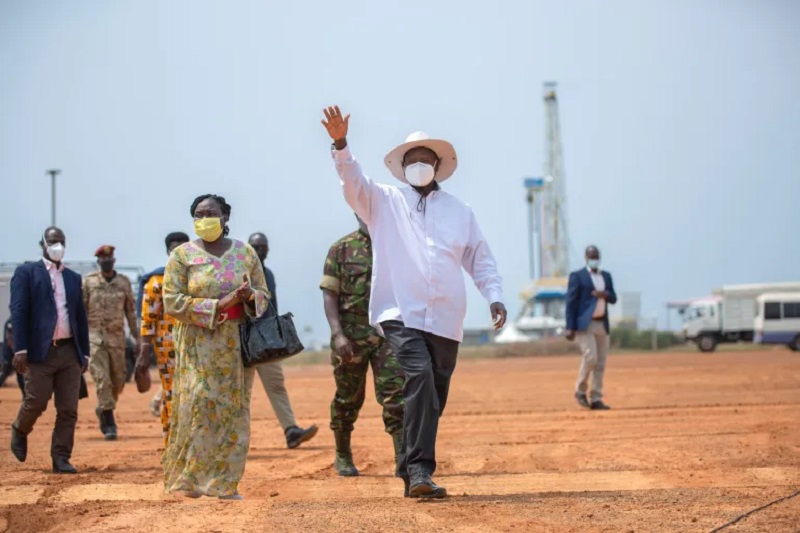According to the country’s petroleum department, Uganda kicked off its first oil drilling program on Tuesday. This marks a significant step forward for the nation as it works toward its goal of beginning oil production in 2025. The Kingfisher field is a component of a plan that will cost ten billion dollars to develop Uganda’s oil reserves, which are located under Lake Albert in the western part of the country. The plan also includes the construction of a massive pipeline that will transport the crude oil to international markets via a port in Tanzania that is located on the Indian Ocean.
On Twitter, the Petroleum Authority of Uganda (PAU) announced that Yoweri Museveni had “formally commissioned the start of the drilling campaign on the Kingfisher oilfield,” referring to the recent event as a “milestone.” The East African country found commercial oil deposits almost twenty years ago in one of the most biodiverse places on Earth. However, production has been slow because the country doesn’t have infrastructure like a pipeline.
According to PAU, the maximum amount of oil that may be extracted from the Kingfisher field, which is managed by the China National Offshore Oil Corporation (CNOOC), is anticipated to be 40,000 barrels per day. Ruth Nankabirwa, the minister of energy, was quoted by the AFP news agency as saying, “We are excited as a country and as Africans.”
Related Posts
According to the Petroleum Regulatory Agency of Uganda (PAU), President Yoweri Museveni started the program at a location in the Kingfisher project area, which is one of the country’s two commercial oil development zones. France’s TotalEnergies runs the second project area in Uganda, which is called Tilenga and is located to the north of Lake Albert along the River Nile. Alongside the Uganda National Oil Company, which is owned and operated by the state, CNOOC and TotalEnergies jointly own all of Uganda’s existing oilfields.
It is projected that Uganda will be able to produce approximately 230,000 barrels of crude oil per day at its production peak. It is believed that the country has crude oil reserves of 6.5 billion barrels, but it can only extract 1.4 billion barrels from those reserves.
However, plans to extract the oil from Lake Albert, which is a 160-kilometer (100-mile) long body of water that separates Uganda and the Democratic Republic of the Congo, have been met with staunch opposition from rights activists and environmental groups. Lake Albert is located between the two countries. They have stated that it poses a threat to the delicate ecology of the region as well as the livelihoods of tens of thousands of people in the region.

